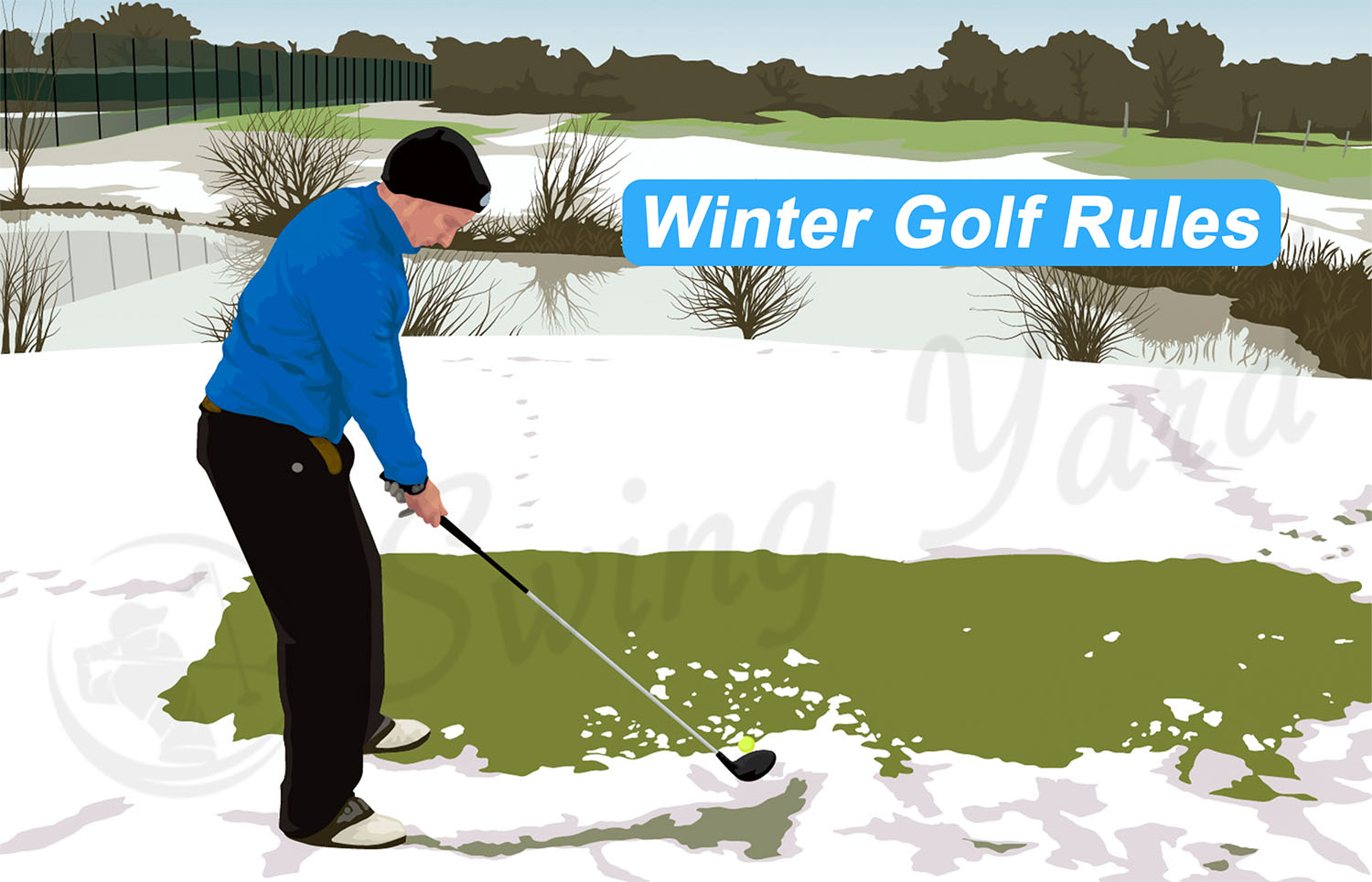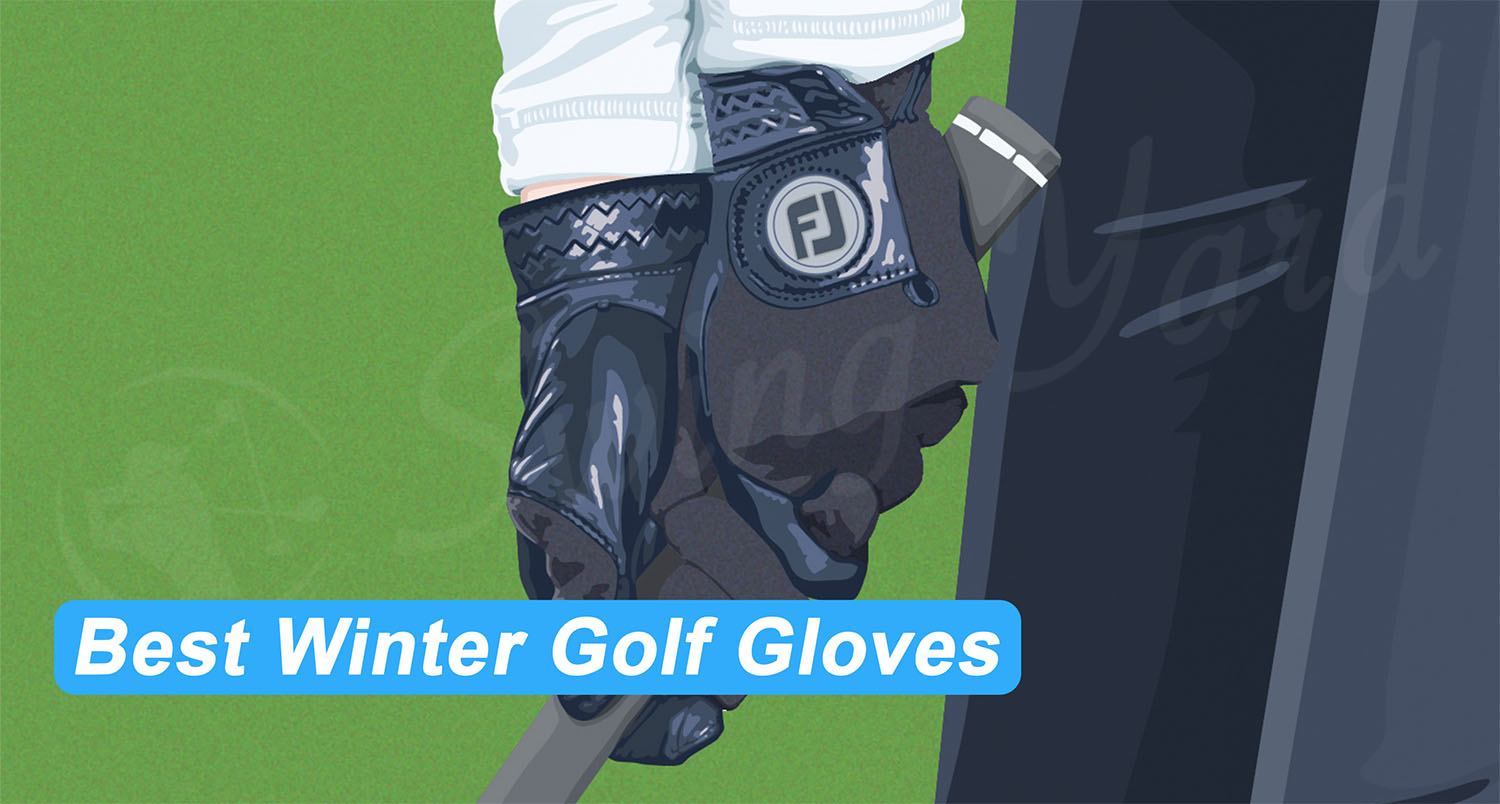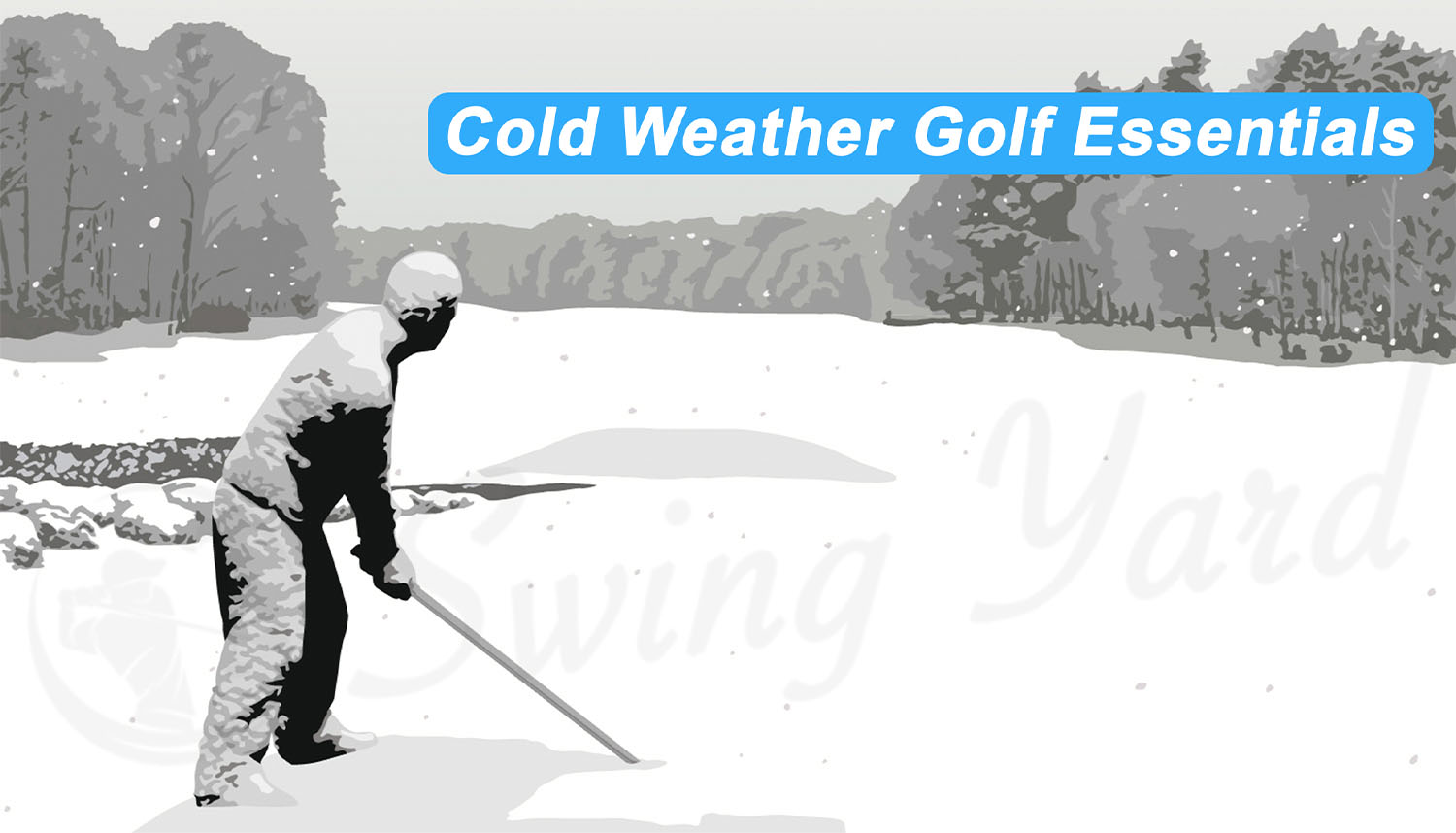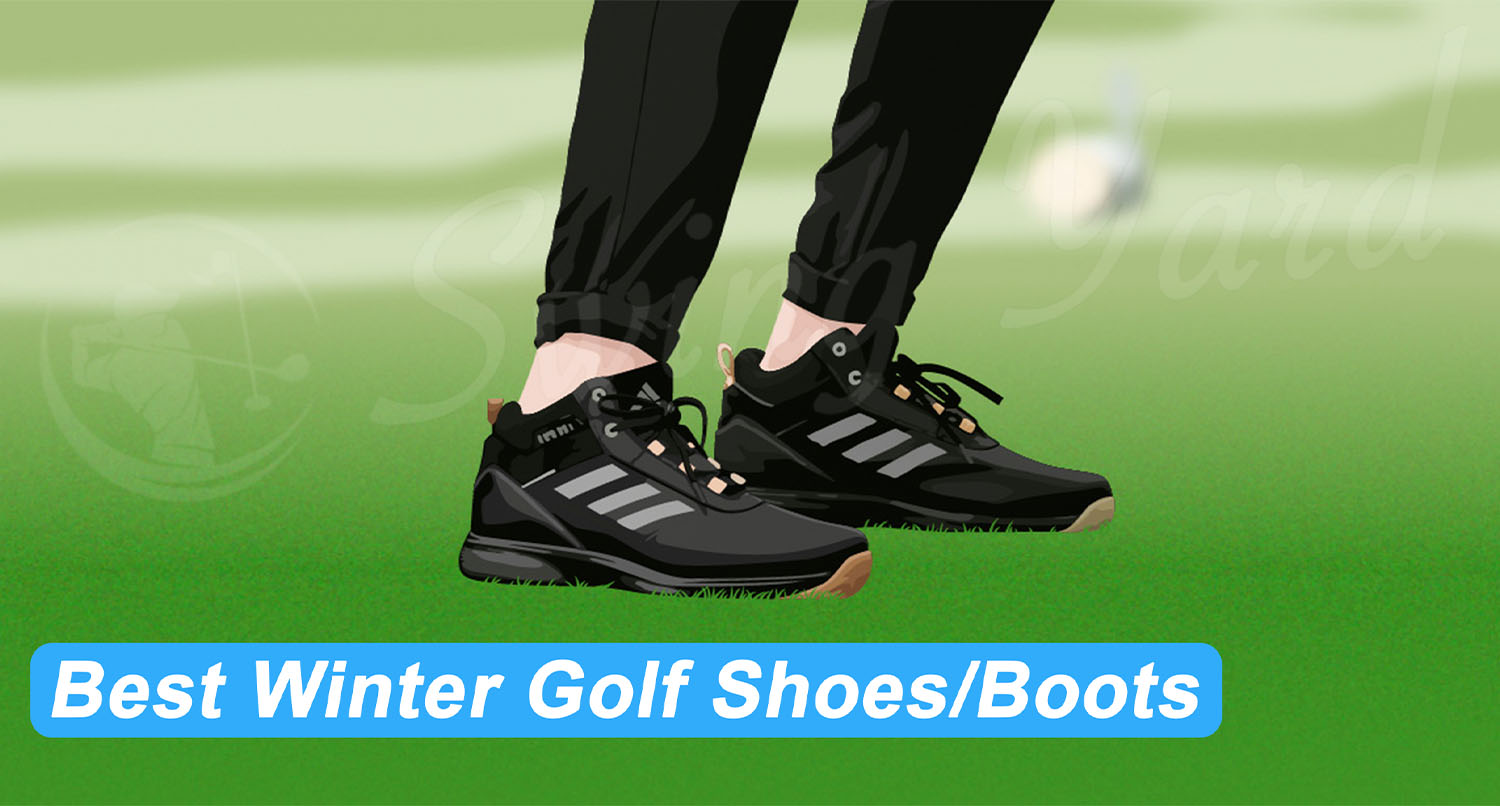Winter Golf – How To Go Low and Stay Warm in Cold Weather
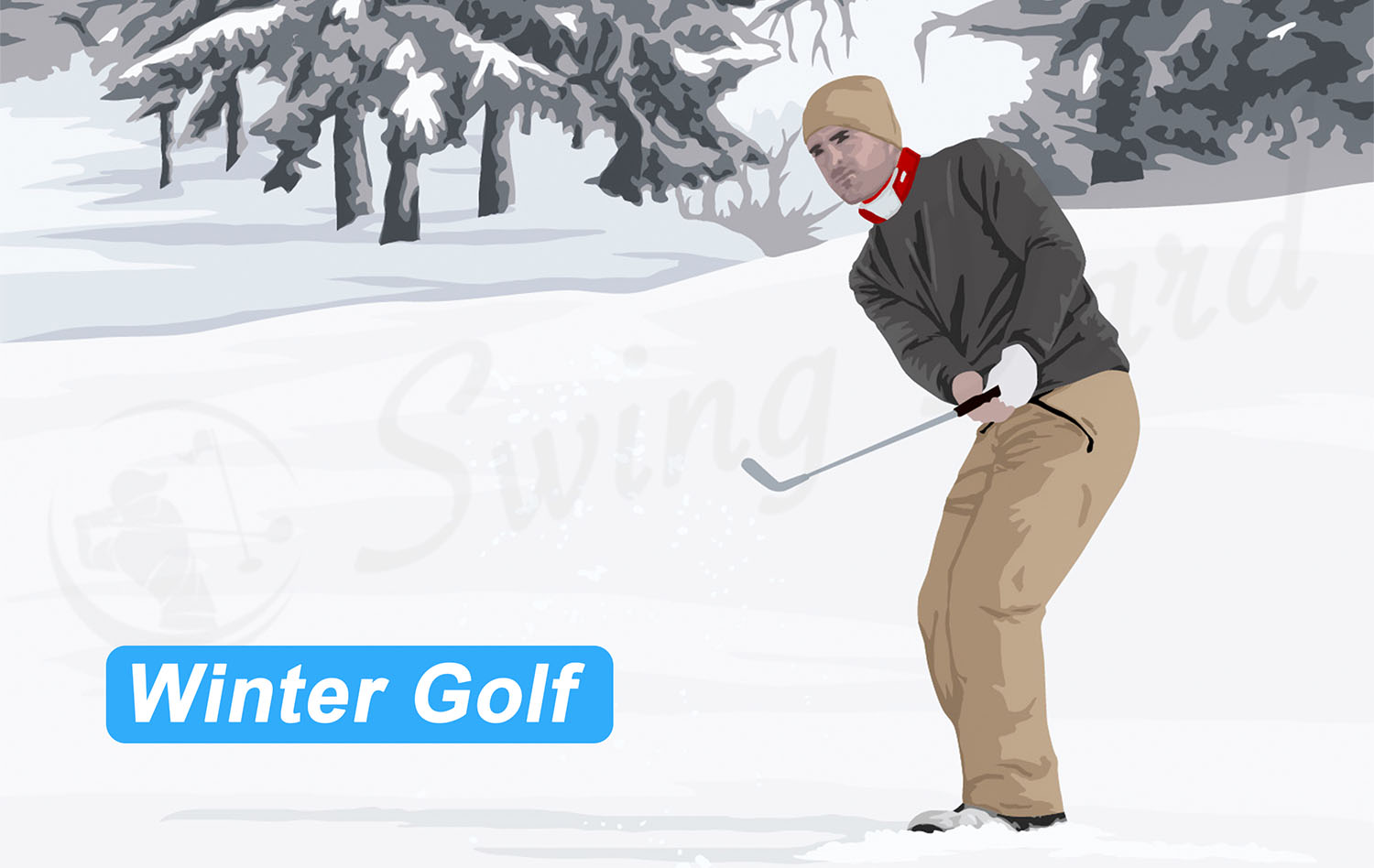
By Coach Erik Schjolberg – Oct 13, 2023
Contents
This was frustrating as I felt that every time my game got on a roll, it was time to put the clubs away for the winter. But eventually, I learned how to play almost all year long.
If the courses were open, I would play!!
However, there is a skill to this, and if you’re not smart about how you play winter golf, it won’t go well. Here are some of my best strategies and tips for playing better winter golf. After all, if you’re going to be out there, you may as well play well.
Key Takeaways – Cold Weather Golf
- Change up your ball to one that’s better for the cold
- Adjust your distances – swallow your ego and club up!
- Dress in layers (you’re going to get warmer as you walk/swing)
- Walk instead of ride
- Good grips are key
11 Tips To Play Better Winter Golf
These strategies and tips for cold weather golf will help you learn that cold golf does not need to be miserable golf. If you know what equipment to use, what to wear, and some ways to manage the golf course, you may even shoot some of your best rounds in the winter months.
1. Change Your Golf Ball
Don’t play with a high compression golf ball in the winter. The golf ball is naturally harder to compress in the winter months, and if you use a slightly softer golf ball when playing winter golf, expect much better results.
For a player that uses something like the Titleist Pro V1, going down to a Titleist Tour Speed could be a great option to consider. The same can be said for a player that uses the TaylorMade TP5x moving to a TaylorMade Tour Response.
The good news is that these slightly lower compression golf balls are typically lower in price! If you want to get smart about your golf ball for the winter, consider a yellow ball, as it will also be easier to see.
2. Dress In Layers
I’ve always liked to play early in the morning, but winter mornings certainly bring a whole other level to the term cold air. Therefore it makes sense to dress in layers. Playing in the early morning may require a polo, a pullover, and a jacket.
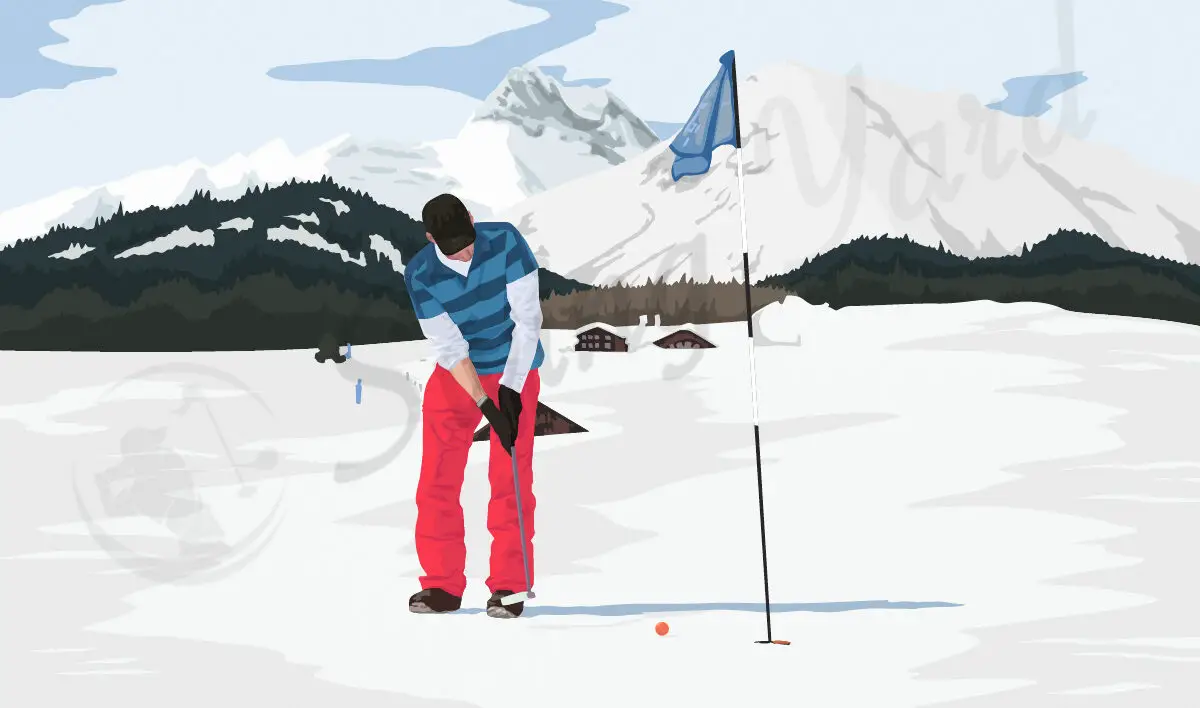

As the day warms up, you may be able to manage the cold weather with just a polo and a quarter zip. This is especially important when you are walking the course. When walking, you will often get your heart rate up, and you may actually get uncomfortable if you are dressed too warm.
Women golfers may even have their own set of winter clothing to layer with.
3. Take A Hike
I have learned to love winter golf; however, I hate winter golf in a cart. It’s so hard to stay warm when your cart is flying you up the fairway. There are great solutions now for propane heaters and golf cart winter covers, but I have still always found one of the keys to playing in the winter is to walk.
If you are going to walk in the winter, you may come across some bare areas of grass where there is a bit of mud or wet turf. Be ready for this by having a pair of rain or winter pants in the bag and also getting some waterproof shoes that you can wear for both warmth and comfort.
4. Indoor Practice
Practicing outdoors in the winter may not be all that easy to do. It’s one thing to play golf and move around the course, distracting yourself with how you play. It’s another to be standing on the driving range freezing.
Most areas of the country where the weather gets bad in the winter will have indoor practice facilities where you can keep your game fresh. In addition, you will lower your chance of injury if you can practice and swing just a bit between your winter rounds.
It’s also a great idea to have an area in your home where you can putt and even chip with a foam ball. Even just a few minutes of a day of these motions that are so important for success on the course can change the outcome of your next round of golf.
5. Don’t Forget To Hydrate
So many golfers remember to drink water when they play summer golf. You will be thirsty and sweating and feel like you sometimes can’t get enough. However, in the winter months, players completely forget to drink water.
Dehydration can be dangerous, but before it reaches those levels of danger, it is also just really bad for your game. Your body won’t function nearly as well, and your brain will be making poor decisions.
Keep that water bottle in the golf bag, and take a few sips after each hole. In the end, you will find that you play much better when you stay hydrated.
6. Know The Rules
Winter rules are different than summer rules. Many courses have winter golf rules in play that can even allow you to lift, clean, and place your ball in certain areas. This is a tremendous advantage and something that all players should be taking advantage of.
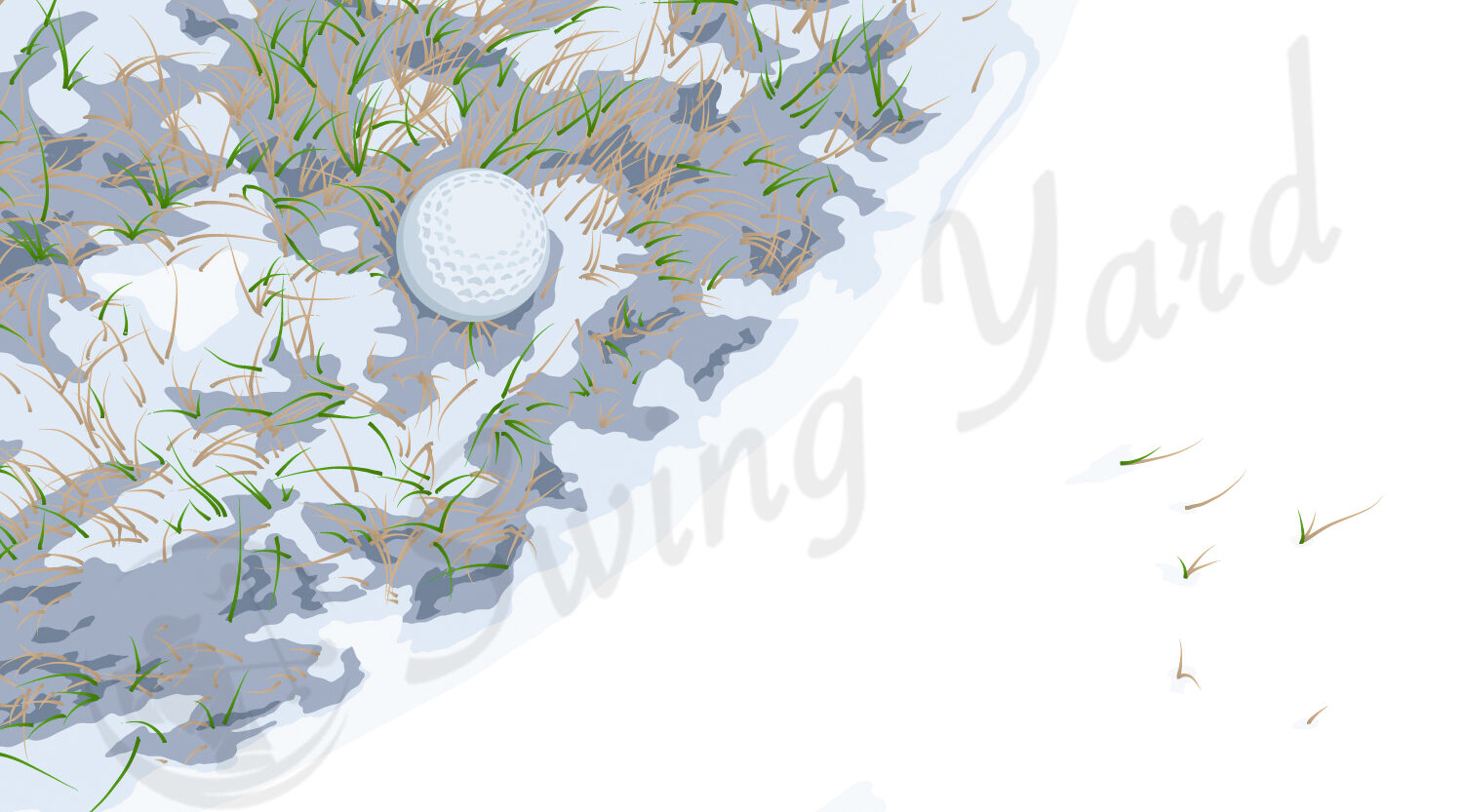

I have been finding that more and more players look at the rules as a negative or a way to punish you. This is not at all the way the rules are designed.
If you know the rules, you can significantly benefit from this knowledge and use it to save you a few strokes.
7. Adjust Your Yardages
Even if you switch to the lower compression golf ball I recommended for cold weather golf; you must also ensure that you adjust your yardage to match the temperatures. If it is really cold on the golf course, a warm ball will be tough to come by. Instead, make sure that you take just a little more club.
If I normally hit my 7 iron 150 yards and have a 140-yard shot into the green on a 40 degree day, I may hit the 7 iron. On a summer day, this could go over the back of the green. When golf balls warm up as your round goes on, expect a few more yards.
8. Invest In A simulator
A golf simulator is a big investment, but it is one that can make golfing in winter much more enjoyable. Instead of having to play outside for every round, you can enjoy some indoor rounds of golf and play golf courses all over the world.
Of course, in addition to or instead of a simulator, you could also travel during the winter months to enjoy golf in warmer areas. Either of these options is a large investment, but you will notice that, in the end, it is much easier to maintain your handicap and play great during the off-season.
9. Add Loft To Your Clubs
If you are lucky enough to have clubs with adjustability, you should look at how your golf equipment is set up for the winter months. In the golf industry, we know that loft equals forgiveness. In cold conditions or even wet conditions, having a bit of forgiveness in the golf gear is a good thing.
For fairway woods and drivers, go up one degree each. This could make all the difference, and if you are following some of the other tips on our list, it should not cause you to lose distance.
10. Make Sure You Have Good Grips
Sometimes in the winter months, your hands can hurt when you play. Golf in the cold is certainly not for the faint of heart. However, if you don’t have the proper grips on your club, you will grip them tightly, and this can lead to an uncomfortable shot where you hit behind the ball.
Winter golf gloves will help keep your hands warm, but the grips help keep your grip pressure down, which is really important in cold weather.
11. Keep Your Golf Ball Warm
A warm golf ball will fly further than a cold one. Although you can’t use an artificial heater to get those extra few years, there is nothing stating that your body heat cannot be used to keep the ball warm. Keep the ball in your pocket, and ensure your golf clothing for the winter has pockets that you can use.
It won’t matter if your golf clubs are warm in the winter; simply keep them clean, and you should have no issues using that golf swing for plenty of great distance and accuracy.
Winter Golf – Is It Good For Your Game?
With all the adjustments that need to be made to your swing, clothing, and strategy, many golfers start to wonder if golf in winter is good for your game. When the temperature drops, should you just hibernate the clubs and save money for the winter?
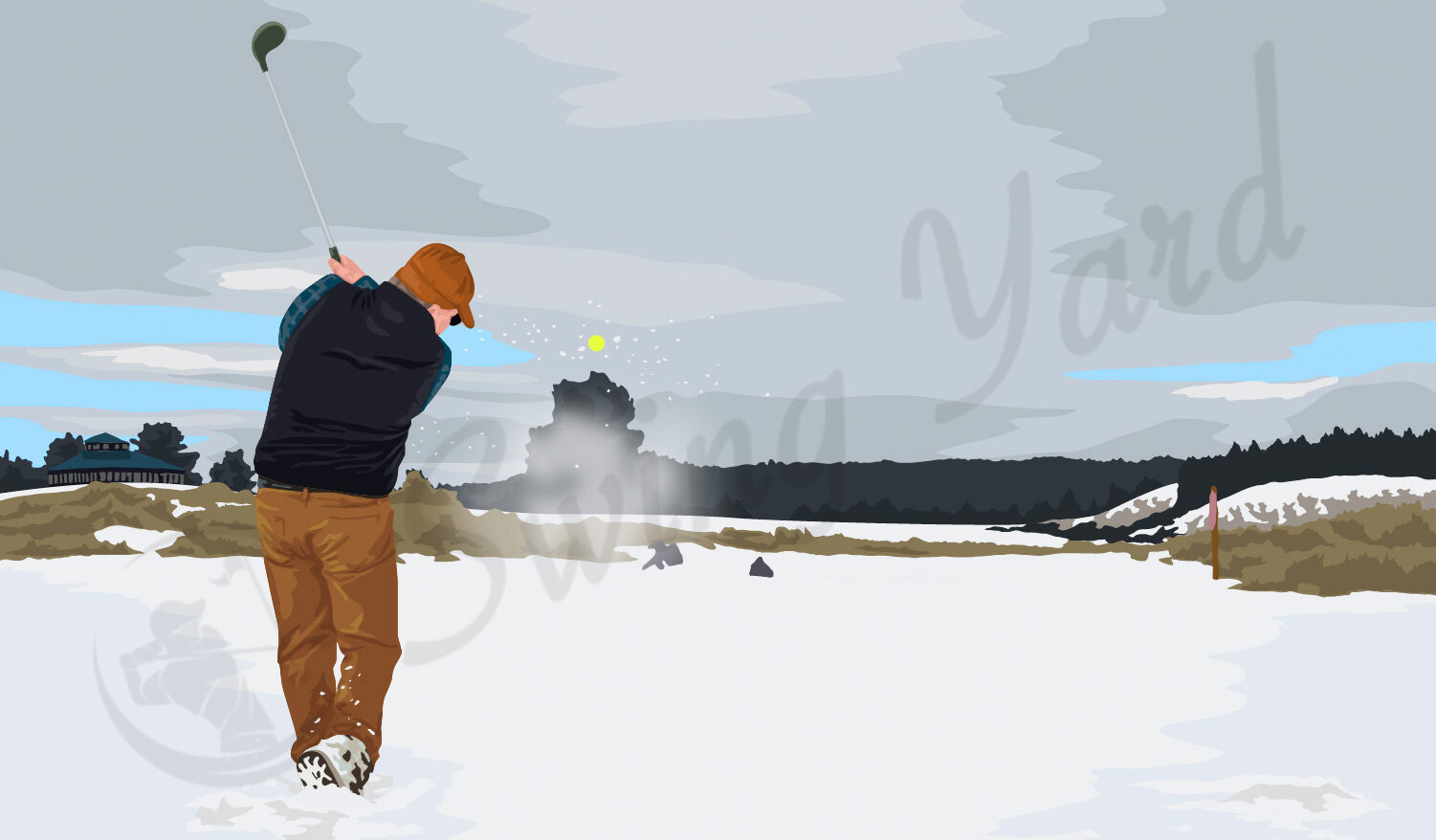

I would have to argue that this is a mistake. You will have to make adjustments to play well in colder conditions, but if you enjoy playing, why stop for the winter?
Playing all year long is a great way to keep your body in shape during those tough winter months; you will also enjoy an easier transition to golf in the spring when the weather warms up again. Year round golf is something that people in warmer climates brag about, but if your courses are open, you can enjoy year round as well.
FAQ
If you are looking for more advice and golf tips on playing golf in the winter, here are a few other things to keep in mind.
Why is golf so hard in winter?
Golf is challenging in the winter because the temperatures make it difficult to keep your blood flowing and your swing fluid. In addition, you will notice that the ball does not fly as far, which is frustrating for golfers looking for more carry.
If you are smart about investing in a good pair of shoes, some warm clothes, and maybe even hand warmers, you will not find winter golf to be quite as hard.
How do you enjoy winter golf?
Enjoying golfing in cold weather comes down to having the right clothing, gear, and also the right mindset. Don’t go out there miserable, be glad you have a day on the golf course and be prepared for it to enjoy the experience fully.
How do you play golf when it’s cold?
When it’s cold, it’s best to ensure that you can keep your head, hands, feet, and neck warm while also increasing loft on the clubs in your bag. Adding loft, adjusting the golf ball you play with, and managing expectations will make for lower winter rounds.
How cold is too cold for golf?
Golfers will have to consider their own personal tolerance when deciding which temp is too cold to golf. However, most find that anything over 40 degrees is well worth playing. In the 30-40 degree range, it can be a bit more uncomfortable.
Is golf harder when it’s cold?
Golf is harder when it’s cold because the ball does not fly quite as far, and you may need an extra club. In addition, your body may not turn and rotate as well, resulting in shots that land a few yards shorter than average.
How much does cold weather affect golf ball distance?
The amount of yardage you lose in cold weather will depend on how cold it is. In addition, the wind will impact the amount of yardage you lose. Expect a solid ten yards of distance loss on a cold day as compared to a warm day on the golf course.
What is too cold to hit driver?
Once it gets around freezing or below, it may be too cold to hit driver. The balls are significantly harder. This prevents them from compressing or “deforming” enough on impact. The titanium face technically doesn’t become more brittle until you get to around negative 300 F degrees.
BUT, the carbon that supports that face is a different story. Carbon fiber does start to become brittle at around freezing temperatures. As long as you are hitting the face, you should be fine, but anything else could cause some damage. Who knows, even the carbon frame could start to break down if the face is smashed against it with too much force.
Final Thoughts – Golfing in Cold Weather / Winter
Winter golf is an opportunity that all golfers should take advantage of. Even playing ten times throughout the course of the off-season can make a huge difference in the way you play during the season.
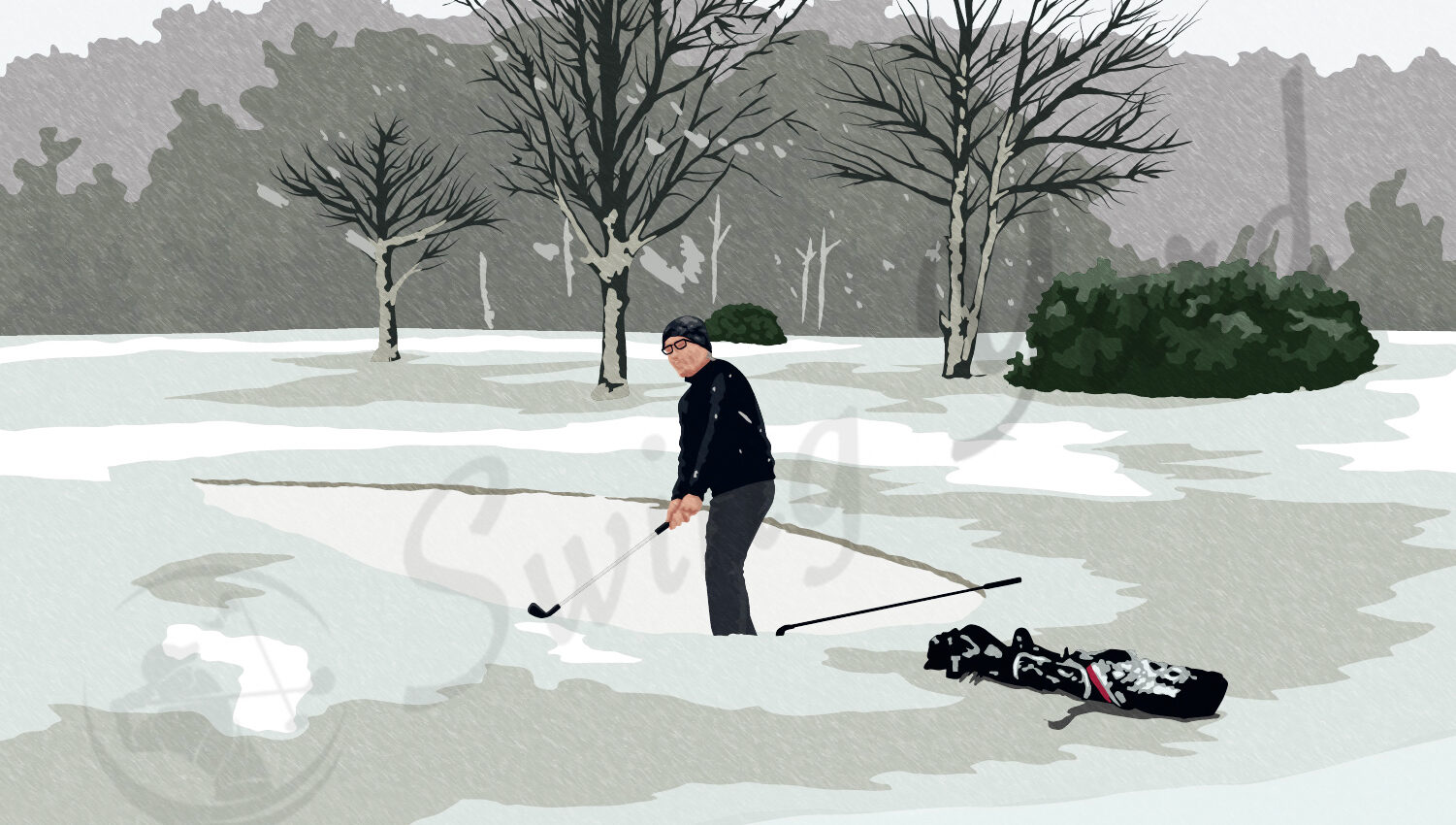

The key is to keep your golf muscles moving and keep yourself active. Give your body extra time to warm up, take it slow, and expect a bit of difference in the distance you hit.
When the weather warms up again, all of your distance will be back, and you will be well on your way to your low golf scores yet again. Don’t let the cold scare you away; golf manufacturers have made it highly possible to play in the winter.



